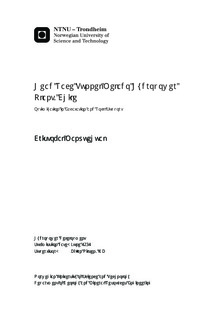| dc.contributor.advisor | Nilsen, Bjørn | nb_NO |
| dc.contributor.author | Manquehual, Cristobal | nb_NO |
| dc.date.accessioned | 2014-12-19T11:55:40Z | |
| dc.date.available | 2014-12-19T11:55:40Z | |
| dc.date.created | 2013-02-06 | nb_NO |
| dc.date.issued | 2012 | nb_NO |
| dc.identifier | 603564 | nb_NO |
| dc.identifier | ntnudaim:7209 | nb_NO |
| dc.identifier.uri | http://hdl.handle.net/11250/236063 | |
| dc.description.abstract | The present thesis is to focus on the two head race tunnels within the Melado HPP, Chile. The upstream tunnel is called Castillo 7800 m long and the downstream tunnel is called Vallical 8800 m long.The feasibility study of this project was carried in 2010. The resulting report from this study was used as a basis for this thesis. Along with all the background information obtained from the feasibility studies, there are some other sources gotten from field investigation tests carried out after the end of the feasibility report.Based on all the information collected, a new rock mass classification was carried out, identifying all the geological stretches for both tunnels. This classification was undertaken according to the RMR system (Bieniawski, 1973) and the Q-system (NGI, 1974). The support required for both tunnels was estimated mainly based on empirical rock support methods. Numerical model by means of software Phase 2 as well as ground behavior analysis were carried out to provide a better understanding of actual problems expected during excavation that are not always cover by the empirical methods.Once there was a clear understating of the rock masses involved in both tunnels along with their corresponding rock support, some analysis related to the tunnels were performed to improve the economical benefit of the whole project.The first economic analysis undertaken was the optimum cross section for Drill & Blast excavation method. A detail analysis that systematizes the cost and advance rate involved in the round cycle of the Drill & Blast excavation method and rock support was used. A thorough analysis of energy losses was also carried out as well, making a distinction between unlined, shotcrete lined and reinforced shotcrete ribs tunnel stretches. The existing cross section of 6.9 m horse shoe shape tunnel turned out to be very small. The new optimum cross section for Castillo tunnel was 8.7 m diameter and 9 m diameter for Vallical tunnel. The second economic analysis was a tunnel alignment change in order to improve some blast design parameters in stretches where their tunnel axis orientation was close to predominant joint set. In any of the two tunnel stretches analyzed turned out to be economically convenient to extend the tunnel for this purpose, even though the safety factor for the crew was not included.Also, the convenience of extra adits was carried out. In fact, the layout of the feasibility report included one extra adit for each tunnel in order to have an earlier tunnel completion. The findings suggest that these adits are not economically convenient as long as the project s electromechanical equipments take 34 months from their manufacturing to their assembly on project cavern. | nb_NO |
| dc.language | eng | nb_NO |
| dc.publisher | Institutt for geologi og bergteknikk | nb_NO |
| dc.subject | ntnudaim:7209 | no_NO |
| dc.subject | MSB1 Hydropower Development | no_NO |
| dc.title | Head Race Tunnel Melado Hydropower Plant, Chile: Optimization in Excavation and Rock Support | nb_NO |
| dc.type | Master thesis | nb_NO |
| dc.source.pagenumber | 417 | nb_NO |
| dc.contributor.department | Norges teknisk-naturvitenskapelige universitet, Fakultet for ingeniørvitenskap og teknologi, Institutt for geologi og bergteknikk | nb_NO |

